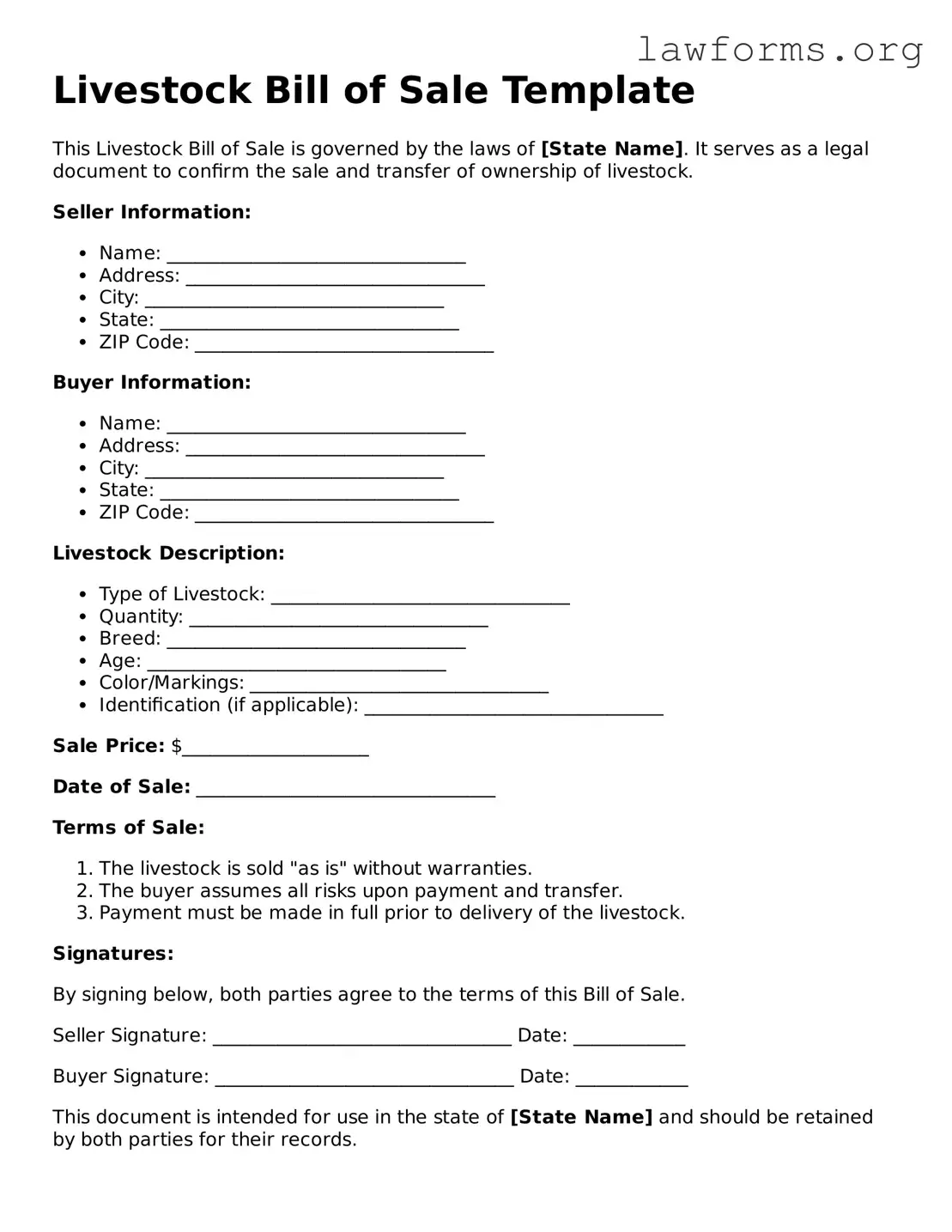Livestock Bill of Sale Template
This Livestock Bill of Sale is governed by the laws of [State Name]. It serves as a legal document to confirm the sale and transfer of ownership of livestock.
Seller Information:
- Name: ________________________________
- Address: ________________________________
- City: ________________________________
- State: ________________________________
- ZIP Code: ________________________________
Buyer Information:
- Name: ________________________________
- Address: ________________________________
- City: ________________________________
- State: ________________________________
- ZIP Code: ________________________________
Livestock Description:
- Type of Livestock: ________________________________
- Quantity: ________________________________
- Breed: ________________________________
- Age: ________________________________
- Color/Markings: ________________________________
- Identification (if applicable): ________________________________
Sale Price: $____________________
Date of Sale: ________________________________
Terms of Sale:
- The livestock is sold "as is" without warranties.
- The buyer assumes all risks upon payment and transfer.
- Payment must be made in full prior to delivery of the livestock.
Signatures:
By signing below, both parties agree to the terms of this Bill of Sale.
Seller Signature: ________________________________ Date: ____________
Buyer Signature: ________________________________ Date: ____________
This document is intended for use in the state of [State Name] and should be retained by both parties for their records.
